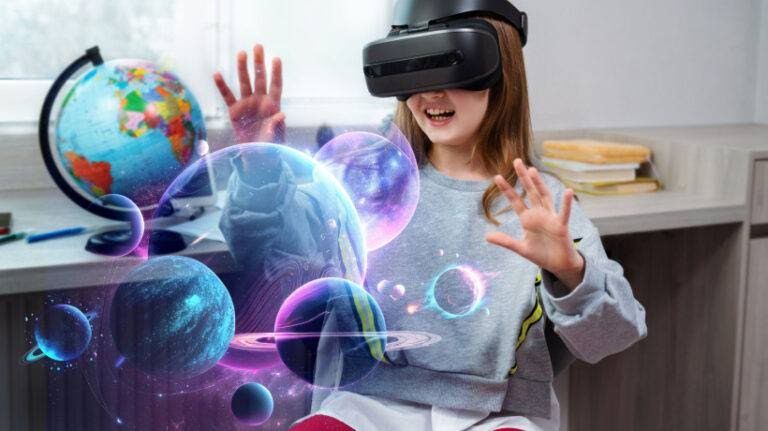Introduction
Augmented Reality (AR) is a revolutionary technology that blends digital content with the physical world, seamlessly integrating computer-generated elements into real-time environments. From gaming and entertainment to retail and education, AR has the potential to transform how we interact with the world around us, enhancing user experiences in ways previously unimaginable. In this article, we explore the pros and cons of augmented reality and its impact on user experience.
Pros of Augmented Reality:
Enhanced User Engagement: One of the most significant advantages of AR is its ability to captivate and engage users on a deeper level. By overlaying digital content onto real-world environments, AR applications create immersive and interactive experiences that capture the user's attention and stimulate their senses.
Personalized Interactions: AR technology enables personalized interactions by tailoring content to individual preferences, interests, and context. Whether it's delivering targeted marketing messages, providing real-time product recommendations, or offering personalized learning experiences, AR enhances user engagement by delivering content that is relevant and meaningful.
Real-Time Information: AR applications provide users with real-time information and insights, enriching their understanding of the world around them. Whether it's navigating unfamiliar environments, accessing live data overlays, or visualizing complex concepts, AR empowers users with immediate access to relevant information, enhancing decision-making and problem-solving capabilities.
Immersive Entertainment: AR has revolutionized the entertainment industry by offering immersive gaming experiences, interactive storytelling, and live events that blur the lines between the digital and physical worlds. From location-based augmented reality games like Pokémon GO to interactive museum exhibits and virtual concerts, AR entertainment experiences transport users to new realms of imagination and creativity.
Enhanced Learning and Training: In the realm of education and training, AR technology has the potential to revolutionize how we learn and acquire new skills. By overlaying digital content onto real-world objects, AR applications enable hands-on learning experiences that engage multiple senses and facilitate deeper comprehension and retention of information.
Cons of Augmented Reality:
Technical Limitations: Despite its potential, AR technology still faces technical limitations, including hardware constraints, limited field of view, and environmental dependencies. Achieving seamless integration between virtual and physical elements remains a significant challenge, impacting the overall user experience.
Privacy Concerns: The collection and use of personal data in AR applications raise significant privacy concerns, particularly regarding location tracking, biometric data, and user behavior analysis. Ensuring user privacy and data security is essential to fostering trust and confidence in AR technology.
Accessibility Issues: AR applications may pose accessibility challenges for users with disabilities, including visual impairments, mobility limitations, and cognitive disabilities. Designing inclusive AR experiences that accommodate diverse user needs and preferences is essential to ensuring equal access and participation for all users.
Content Quality and Consistency: The success of AR applications hinges on the quality and consistency of the content they deliver. Poorly designed or implemented AR experiences can detract from the user experience, leading to frustration and disengagement. Maintaining high standards of content quality, accuracy, and relevance is essential to maximizing the impact of AR technology.
Integration and Adoption Hurdles: Integrating AR technology into existing workflows, systems, and processes can be challenging, requiring significant investment in infrastructure, training, and change management. Overcoming organizational resistance and fostering widespread adoption of AR solutions may require strategic planning, stakeholder engagement, and ongoing support.
Conclusion: Embracing the Potential of Augmented Reality
While augmented reality presents numerous opportunities to enhance user experiences across various domains, it also poses challenges and considerations that must be addressed to maximize its impact. By leveraging the strengths of AR technology while mitigating its limitations, organizations can unlock new possibilities for innovation, engagement, and growth. As the technology continues to evolve, embracing a user-centric approach and prioritizing user needs, preferences, and privacy will be essential to realizing the full potential of augmented reality in enhancing user experiences.

Upvoted. Thank You for sending some of your rewards to @null. Read my last posts to make sure that BLURT burning is profitable for you. Before using this bot please make sure your account has at least 100 BP. Get more BLURT:
@ mariuszkarowski/how-to-get-automatic-upvote-from-my-accounts@ blurtbooster/blurt-booster-introduction-rules-and-guidelines-1699999662965@ nalexadre/blurt-nexus-creating-an-affiliate-account-1700008765859@ kryptodenno - win BLURT POWER delegation